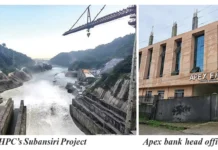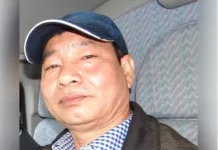[ Dr J. Komalalakshmi ]
The vision of Viksit Bharat (Developed India) by 2047 is centered on sustainable economic growth, social equity, and a flourishing, skilled workforce that can compete globally. However, this vision faces significant challenges due to learning poverty, which persists in the country. Learning poverty, defined as the inability of children to read and comprehend basic texts by age 10, is a critical roadblock to India’s development goals. Addressing learning poverty is essential to building a skilled workforce, promoting economic prosperity, reducing inequalities, and achieving Viksit Bharat by 2047.
Learning poverty stunts the development of essential skills like literacy, numeracy, and critical thinking, which are critical to economic productivity. With a significant portion of India’s population lacking these skills, the nation faces a skills shortage that will slow down its industrial, technological, and service sector growth. Human capital-the knowledge, skills, and abilities of the workforce-is a key driver of innovation and technological advancement. Learning poverty weakens human capital, limiting the creative potential of future generations. Learning poverty exacerbates social inequality by limiting opportunities for disadvantaged groups. Without foundational education, children from marginalized communities are less likely to break free from the cycle of poverty. This deepens societal divides and can hinder social harmony.
Children who are unable to read or understand simple texts at the age of 10 are less likely to make informed decisions about their health and well-being. Learning poverty has a direct link to lower health literacy rates, which in turn leads to poor health outcomes and increased vulnerability to disease.
Learning poverty disproportionately affects girls, particularly in rural and underprivileged communities. Without equal access to quality education, girls are less likely to access opportunities for employment, leadership, or entrepreneurship. An educated population is critical for a functioning democracy, with citizens actively participating in decision-making, holding governments accountable, and understanding policies. Learning poverty diminishes this capacity. Learning poverty is a significant barrier to achieving quality education in India. Addressing the root causes of learning poverty in India requires a holistic, multi-faceted approach. This involves improving access to quality education, addressing socio-economic disparities, enhancing teacher training, revising the curriculum, focusing on early childhood education, improving infrastructure, and leveraging technology.
By tackling these underlying factors, India can make significant strides in reducing learning poverty and ensuring that every child receives a meaningful education that prepares them for future success. While India has made strides in expanding access to higher education, significant challenges remain in ensuring that all students acquire the necessary skills and opportunities to succeed. Addressing these challenges is crucial for fostering an inclusive and prosperous society.
The vision of a Viksit Bharat 2047 is tied directly to the nation’s educational outcomes. Learning poverty is a critical barrier that India must overcome if it is to become a fully developed nation. Eliminating learning poverty will not only improve educational outcomes but will also directly contribute to India’s development in terms of human capital, innovation, and global competitiveness-ultimately realizing the dream of a Viksit Bharat by 2047. The author has designed the KLMN SWASTIK© education logo and education flag which addresses the need of quality education that ensures the foundational academic skills and improves the higher order thinking skill in every student to achieve AMRIT KAAL of Viksit Bharat 2047.
By addressing learning poverty through targeted interventions, India can unlock the full potential of its people, ensuring a prosperous, inclusive, and sustainable future for all.




